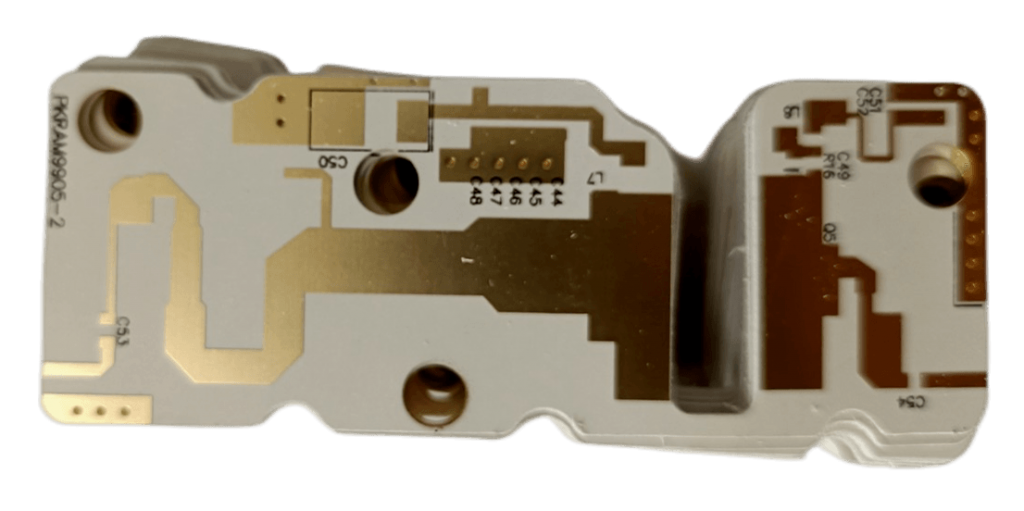
In the fast-paced world of electronics and technology, printed circuit boards (PCBs) play a pivotal role in powering a diverse range of devices, from smartphones to industrial machinery. Among the leading players in the PCB manufacturing industry, Rogers PCB stands out as a beacon of innovation and excellence. With a comprehensive array of material options, Rogers PCB offers a full spectrum of solutions to meet the ever-evolving demands of modern electronics. In this article, we delve into the world of Rogers PCB and explore the extensive range of materials they employ in their manufacturing process.
Understanding Rogers PCB’s Material Excellence
Rogers PCB has garnered a reputation for its commitment to pushing the boundaries of technology and design, leading to the development of a wide range of specialized materials that cater to diverse industry needs. These materials are characterized by their unique properties, allowing for enhanced performance, signal integrity, and reliability in the final product.

The RO4000® series is a hallmark of Rogers PCB’s material innovation. These high-performance dielectric materials offer exceptional electrical properties, making them ideal for high-frequency applications. With low dielectric loss and outstanding thermal stability, RO4000® materials ensure minimal signal distortion, even in demanding environments. This series is a go-to choice for applications in wireless communication, aerospace, and defense.
The RO3000® series is renowned for its versatility and consistent electrical performance. These materials provide a balance between cost-effectiveness and high-frequency capabilities, making them suitable for a wide range of applications, including cellular base stations, automotive radar, and satellite communications.
For applications that demand exceptional thermal reliability, the ROGERS ULTRALAM® 3000 series comes to the forefront. These materials offer a high glass transition temperature (Tg) and can withstand challenging thermal conditions. Industries like automotive electronics and power electronics benefit from the reliability and stability provided by this material series.
The RO4000 LoPro™ series is tailored for applications requiring low-profile designs while maintaining high-frequency performance. These materials are designed to address the challenges posed by reduced layer count and increased complexity in modern PCB designs, making them a valuable choice in the ever-shrinking world of electronics.
When it comes to RF and microwave applications, the RO4003C™ series shines with its consistent dielectric constant and controlled impedance. These materials are engineered to deliver precision in signal transmission, making them suitable for RF amplifiers, antennas, and satellite communication systems.
In applications that require advanced thermal management solutions, the RO4730G3™ bonding material steps up. This material’s high thermal conductivity ensures efficient heat dissipation, making it an excellent choice for power electronics, LED lighting, and automotive systems.
The Advantages of Rogers PCB’s Full Material Range
The comprehensive material range offered by Rogers PCB ensures that every project can be met with a tailored solution. From high-frequency applications to high-power designs, there’s a material that aligns perfectly with the specific requirements of each project, mitigating the need for compromise.
The innovative materials used by Rogers PCB are engineered to deliver enhanced performance and reliability. Whether it’s maintaining signal integrity, withstanding thermal stress, or minimizing electromagnetic interference, these materials contribute significantly to the overall efficiency and longevity of electronic devices.
Rogers PCB’s material range has found wide adoption across various industries. From telecommunications and aerospace to automotive and medical electronics, these materials have demonstrated their capabilities in some of the most demanding applications, further solidifying their reputation for excellence.
As technology advances, the demand for PCBs with unique and specialized properties continues to rise. Rogers PCB’s material innovations are at the forefront of supporting these advancements, ensuring that PCBs can meet the challenges posed by emerging technologies.
Conclusion
Rogers PCB’s commitment to innovation, quality, and technological excellence is reflected in its extensive range of material options. From the high-frequency demands of wireless communication to the thermal challenges of power electronics, Rogers PCB materials are engineered to cater to a diverse array of applications. Their reputation for reliability and performance is a testament to the continuous advancements in material science and manufacturing techniques. As the electronics industry continues to evolve, Rogers PCB remains a frontrunner, delivering solutions that power the innovations of tomorrow.